CDG newsletter 22, December 2014
In this newsletter:
Chairmans Comment
One of the key purposes for CDG is to build markets in New Zealand for cypress timber. Testing is underway to determine the characteristic stresses for macrocarpa. This will make a total of 3 cypress species that we'll be able to promote and use within the constraints of the building code as structural timber. You'll all be informed when this project is complete.
The NZ Standard NZS 3603 (Timber Structures) is up for review and because producers of cypress timbers require representaion I have lobbied vigorously and am on the Standards Committee. I'll be doing my best to ensure our interests are not further eroded and that we will be able to continue to use cypress timbers in structural design.
I attended to action Group Weekend in and around Tauranga, appropriately labelled "Taking our wood to market". This was a great event, described in more detail below.
Please if any of you have stories for this newsletter, get in touch with me by email.
Dean Satchell
Action Group Weekend "Taking our Wood to Markets"
Saturday morning - Tauriko sawmill
Saturday morning brought with it still and sunny weather and a visit to Tauriko sawmill, a specialty timber sawmill near Tauranga owned by the Moore family. Rob Moore originally set up the sawmill, now operated by son Mike. The day started with a philosophical discussion beside the new wood display building which showcases local high quality timbers.
From there we walked down to one of the facilities, the processing shed where the dressing and profiling of timber takes place. We were given a demonstration of an innovative planing head on a woodmizer bed which works amazingly well for the otherwise very difficult task of planing the surface of large beams and posts. Manhandling is eliminated, making a pleasure of such tasks.
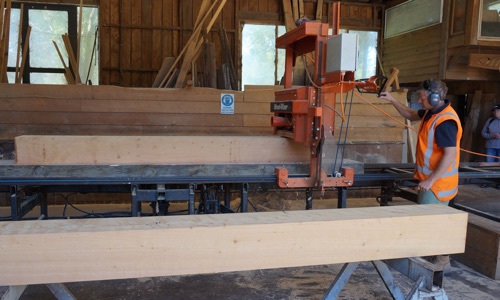
Tauriko have invested in modern machinery and have moved away from portable sawmilling and into setting up stationery equipment at their own site. They operate several pieces of woodmizer machinery including a brand new electric twin blade edger, two band sawmills and the planing head described above. In addition they have a Mahoe circular sawmill set up as a stationary mill, which means bringing all logs there rather than taking sawmills to logs. They consider this a more efficient system and hold a good pile of logs at the mill ready for sawing. Rob commented that he cut for $180 a cube 20 years ago and is still cutting for that today. This illustrates just what little margins there are in timber and especially timber processing.
The mahoe is often used for breaking large logs down into manageable cants that are then sawn into final product sizes on the more recovery-efficient woodmizer bandsaw/edger combination.
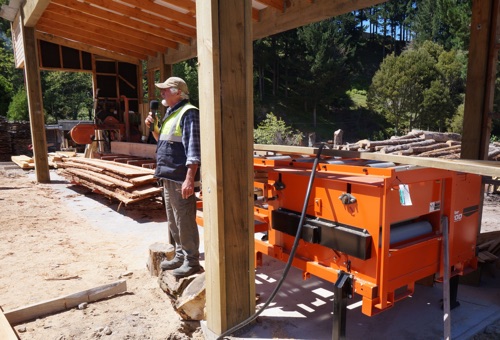
Growers and sawmillers discussed log prices and log quality. Tauriko prefer growers to supply logs on an ongoing basis because of the huge outlay to buy large volumes of logs at once. The radiata mentality of harvesting your entire block of trees at once is problematic for specialty species because the market for both logs and timber is not large and can easily be swamped. By co-operating with a sawmiller the grower who supplies logs as the sawn timber sells is rewarded with ongoing sales of logs. Such symbiosis benefits both the mill sawing and selling the timber with a continuum of supply, and the grower with a steady market for their logs. Rob also discussed opportunities for the grower to enter into joint ventures where good log quality provides increased returns to the grower.
One of the primary issues for Tauriko is log quality. Only rarely are good grades of timber recovered and log prices reflect this. The fact of life is that unmanaged trees produce low recoveries of valuable timber. Mike would love to buy quality logs from managed plantations but these aren't available. Older, bigger logs produce better quality though and are generally worth more. "Quality comes with time, time is sacrifice". Growers need to improve log quality to improve returns for their logs. More "fillet steak"...
One of the key issues Tauriko see with developng markets for specialty timbers is that only 5% of end users want specialty timber products. Channels to market are restricted by the corporates who are protecting their commodity-type radiata products. Convincing the public to buy "alternative" species is difficult when the public and architects hold a "radiata" mindset. The architects and engineers are uninformed and meeting the durability requirements of the building code which are designed around treatment levels for pine is problematic.
Merchants and box stores don't tend to stock specialty timbers, but order these from Tauriko when a customer makes a request.
Redwood
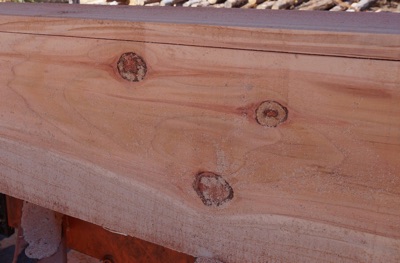
The group discussed log quality while viewing sawn redwood timber produced from lower quality logs. Black knots and knot holes are a big issue because the premium market for redwood is for cladding products. Paul Silcock discussed growing redwoods and the tradeoff between sapwood and volume. Heartwood formation in redwood is poorly understood, however a relationship between increasing green crown length and higher proportion of sapwood has been quantified in the US. For a pruned product volume is the key. By decreasing final crop stocking, a higher pruned log volume will be achieved within the same rotation length. But the value of this additional volume in the buttlog is unknown – it could be all sapwood.
The importance of Green Crown Length on value recovery was further emphasised when some untended redwood logs were being bandsawn, some beautiful heart with tight green knots was severly downgraded to utility grade by the presence of bark encased, loose knots. These knots form at some stage following branch mortality. Branches can be kept in a green state by decreasing stocking to maintain green crown length, or by an ultra-high pruning treatment. More data is required for the sawing simulator to begin to develop economic justification for applying such treatments, but if there was one message to take away from Taurikau that day – it was to apply your silviculture on time, and if it has bark encased knots….they don’t want it!
Cypress essentially has the same issues because we are after clear heart to get premiums for our logs.
Shingles and bee boxes were mentioned as products suitable for heart redwood "shorts".
Low value redwood with loose, black knots is worth $60-$70 landed at the mill, whereas top quality unpruned redwood with small green knots yields $130-$150 per tonne landed. good pruned butts $150 or more, $200 where excellent content of clear heart is proven.
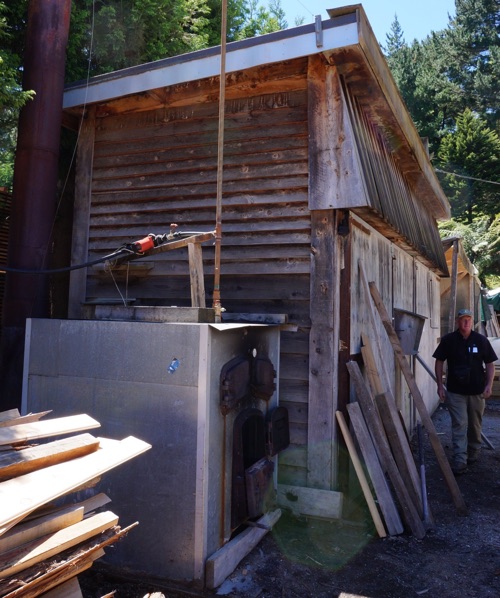
Eucalyptus
E. saligna and E. botryoides is marketd as "Australian mahogany"
E. globoidea, E. muelleriana and E. pilularis are together markjeted as "Blackbutt".
E. regnans, E. delegatensis and E. obliqua are together marketed as "Victorian Ash".
Tauriko are happy with "younger" logs (e.g. 25 years) provided the diamater is good.
Eucalypt is usually sold as flooring, decking and engineered applications. There are some market issues with many customers having a preference for imported australian eucalypt timber based on the assumption that quality is better.
Cypress
Tauriko like larger, older logs but what these contain can be unpredictable. Shelterbelt macrocarpa is often not of very good quality and plantation logs simply aren't available. Older lawson cypress tends to have lots of black knots which pull out when the timber is dressed, leaving holes. Leyland cypress is a good timber but is difficult to sell because the public don't "know" it.
Poplar
Tauriko rate poplar very highly but selling it isn't easy because it is not well known.
Saturday afternoon - Moxon Timbers Tauranga
Andrew and Kerry from Moxon led the afternoon discussion at their timber yard. They run kilns and dry timber ready for the market. They mostly supply specialty timbers and emphasised the importance of turnover. They mostly supply hardwoods. Most of the eucalyptus they supply is imported from Australia. They have been "burned' by cowboys supplying them with poor quality local product and are reluctant to buy NZ eucalypt. They like the straight long length quartersawn product coming from old growth forests in Victoria and the timber is 100% saleable product. Andrew mentioned some success with local E. globoidea.
Grey and soft tones are in fashion, while darker red and brown are not. Good demand for spotted gum, less so for jarrah.
Moxons essentially import the "cream" from old growth forests in other countries and for them to consider local product the quality and price would need to match what they currently procure. This means 100% quality in so they can sell 100% of the timber they buy, and quality needs to be similar to what comes out of virging rainforest.
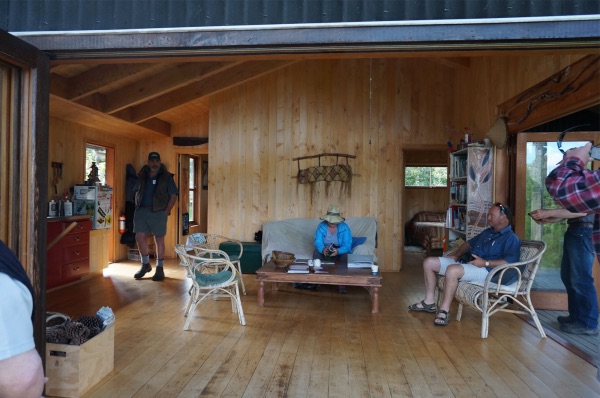 Sunday field day, Blackley/Walton property, Papamoa Hills, Bay of Plenty
Sunday field day, Blackley/Walton property, Papamoa Hills, Bay of Plenty
The field day started at Gabrielle and Andrews cabin made from poplar and cypress. From there we looked at a small stand of kauri where growth rates and management options were discussed.
Next the group held some more detailed discussions among the 12 hectare stand of 30 year old pruned (to 6m) and thinned lusitanica. This stand is sitting at 540 m3 per hectare. Management options around "where to from here" were discussed, and some questions arose around whether 40cm diameter buttlogs are of suitable size for milling. Are 40cm pruned logs really "top grade" and will these return good yields of clear heart and therefore good prices? It was suggested that a selective harvesting model where individual trees would be thinned from above for larger diameters, to provide room for the smaller trees to grow larger pruned butts is necessary. This model would ensure a sustainable cut of large diameters over the long term, important for log marketing, without loss of aesthetic values. This model would also retain high annual volume growth which at the current stocking (300 sph) is likely to be slowing down at some point in the next 10 years. The right people with the right expertise and the right equipment would need to be involved in harvesting though.
The next stop was a quick look at the log pile of poplar and eucalypt to be milled for Gabrielle and Andrew's upcoming house construction project. From there we went up the hill and watched a sawmilling demonstration with a mahoe mill cutting a 28 year old unpruned Eucalyptus regnans log and a 30 year old pruned Cupressus lusitanica buttlog. the regnans was milled into flooring and produced plenty of clearwood but with some crook off the saw. The 40+ cm diameter lusitanica didn't produce any clear heart boards primarily because of the large sap band and the large knotty core, telling me that 50cm + is the target from this stand.
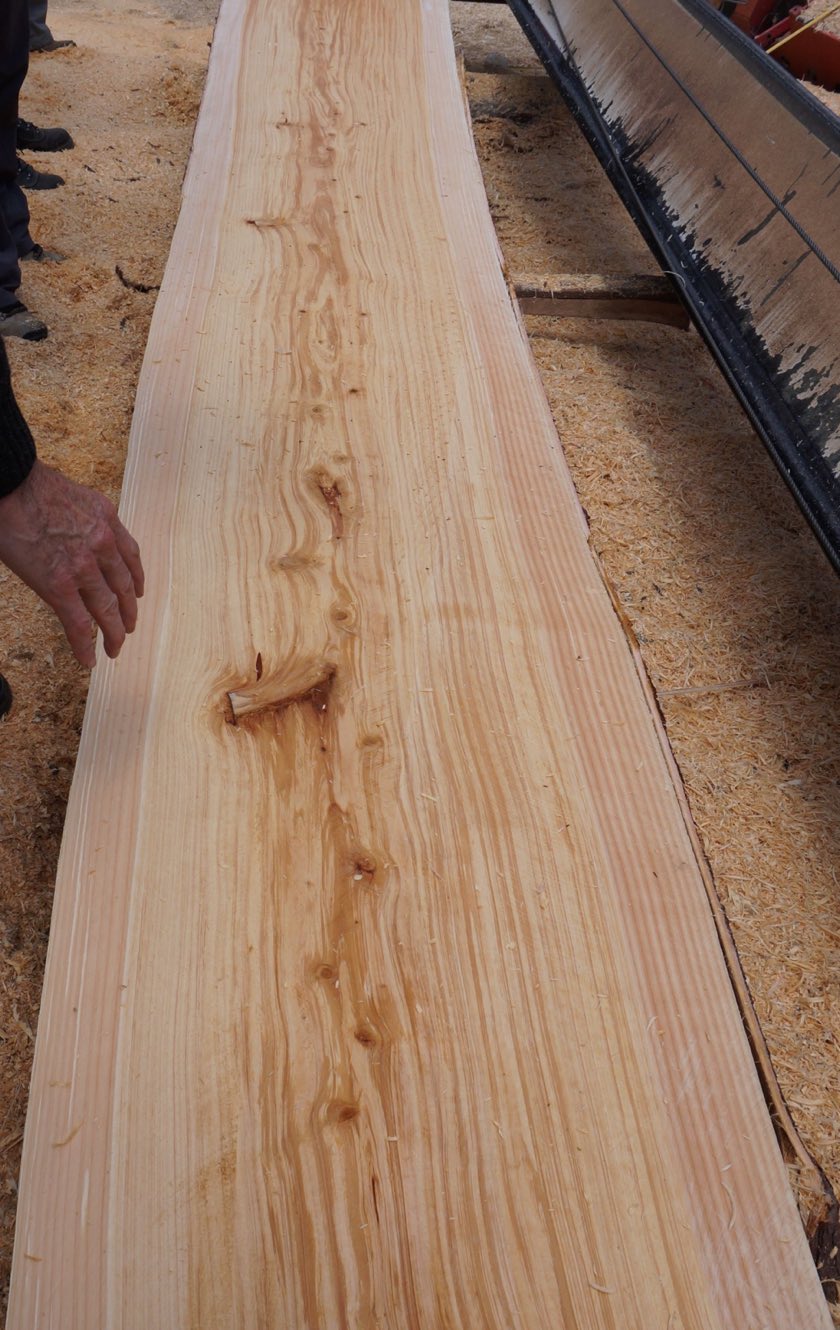
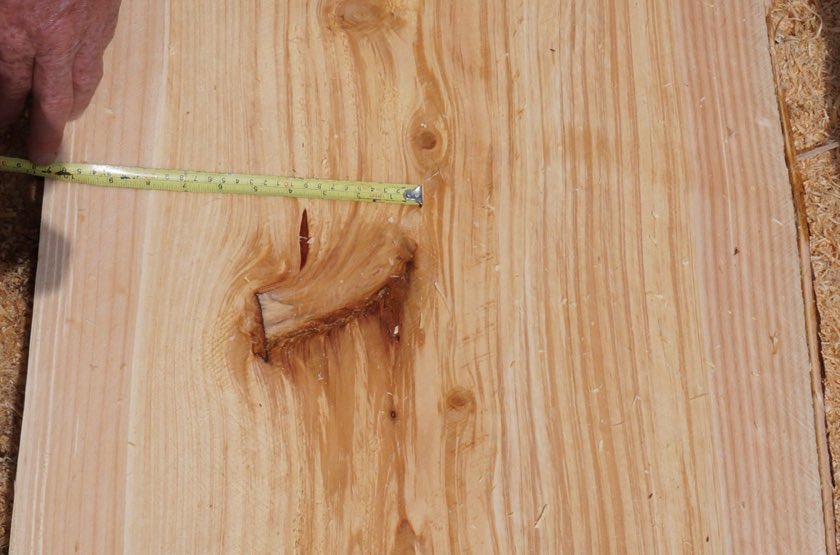
A small group of cypress enthusiasts held an excursion after lunch to another stand of cypress, mostly 8-10 years old. This 15 hectare plantation is about half lusitanica and half ovensii. The trees are 7-8 years old and have been pruned and thinned. Canker is virtually absent but Gabrielle described problems with Kaka damage. The management is good overall with the critical last lift still to come. This must be done on time for small DOS's that lead to production of a large percent of clearwood in the buttlog. Gabrielle is doing a great job of managing the cypress and it's a breath of fresh air for me to see a good sized stand managed so well.
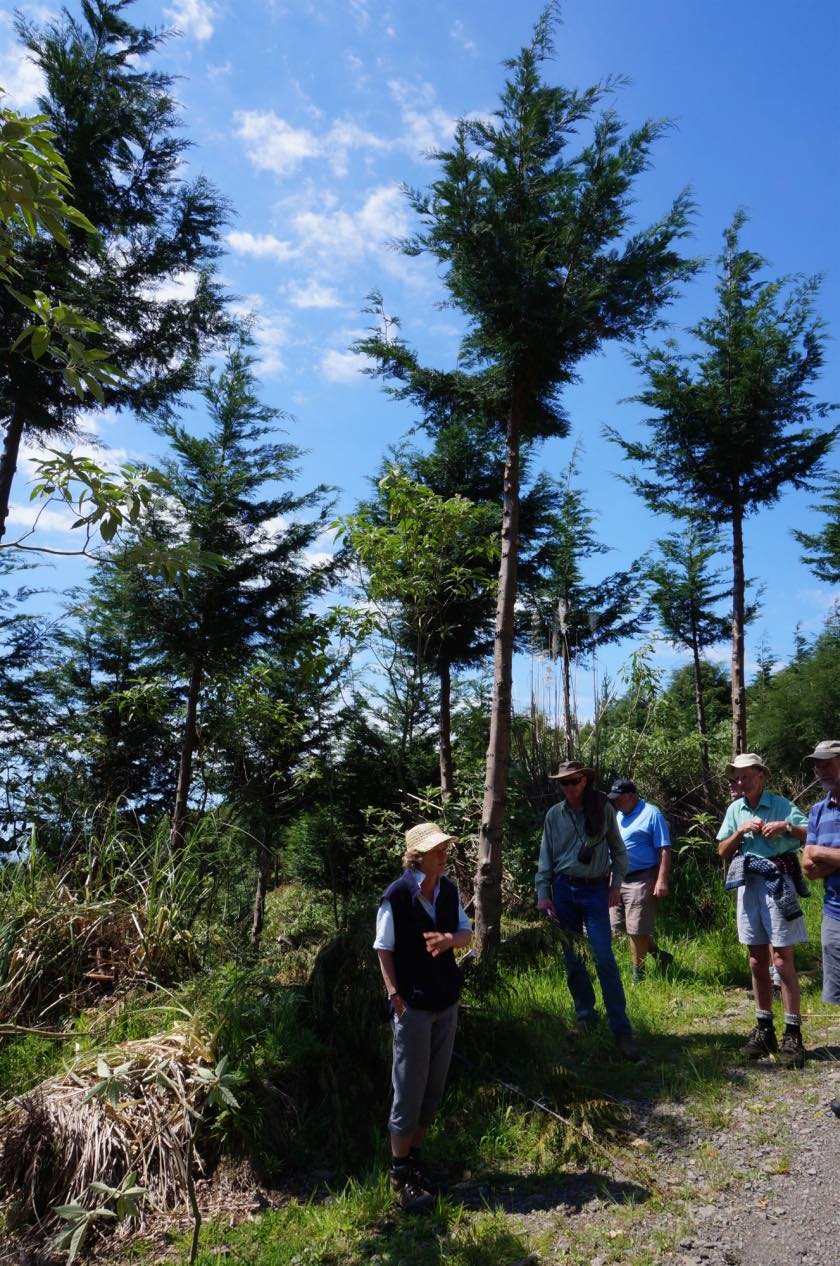
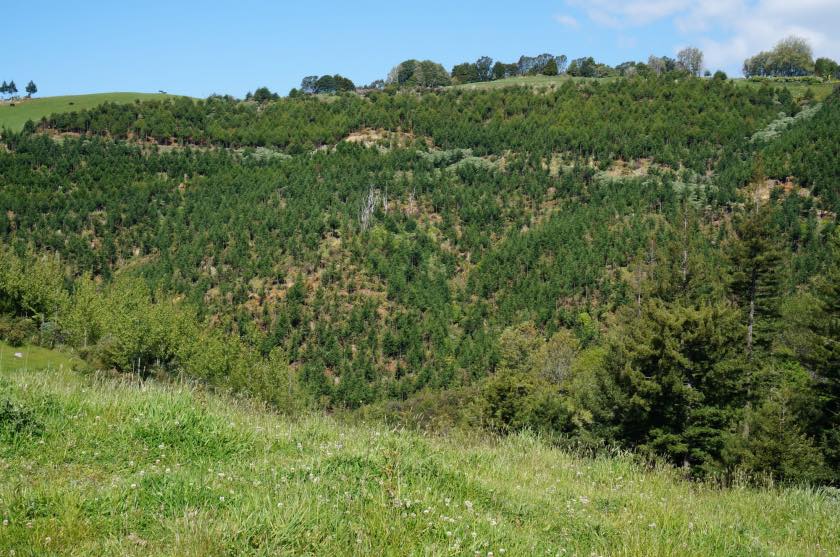
Dean Satchell

 Farm Forestry New Zealand
Farm Forestry New Zealand